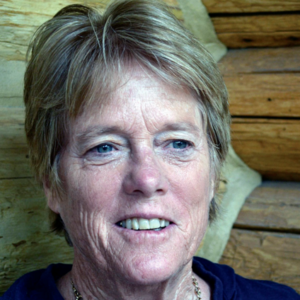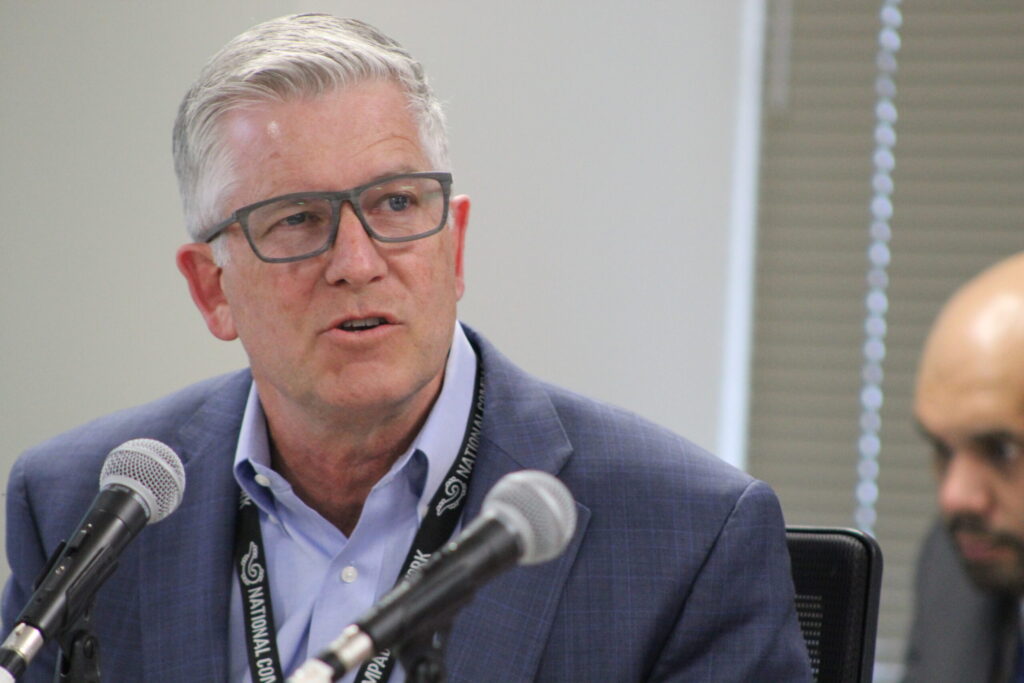What wildfires mean for Colorado’s ranchers | GABEL
On the plains, grassfires rip across miles of pasture, fueled by wind and drought, two things that carouse around together like two drunks with a pocketful of whisky money. Fires move fast and burn hot, fought by small volunteer crews, farmers pulling discs to create barriers, and ranchers who cut fences and push cow calf pairs to fields of green wheat. In western Colorado, where the Turner Gulch Fire is burning, fire is a different creature altogether, staying on the nightly news for weeks, reported on by coiffed anchors in sensible shoes before maps with flames marking the active burns and the percentage of containment.
My friend, Janie VanWinkle, and her family — husband, Howard, and son, Dean — graze cattle on a U.S. Forest Service allotment and about half of the Turner Gulch Fire is burning on their allotment. Their cows — about 700 head — are still on the allotment and they have been spending their days horseback, moving cattle away from the fire and out of the way of the crews utilizing backburns, completing handwork, and receiving aerial slurry drops.
The fire began in the Unaweep Canyon in Mesa County, an area with meadows in the bottom and oakbrush along the hills. There are homes in the canyon and crews were able to save them. She said the fire burned through the Unaweep and then crept up the rim and onto the Uncompahgre Plateau. The canyon walls of the Uncompahgre are steep and covered in granite rock. Trees were burning in the canyons and when one fell into the next canyon, that canyon began to burn. Janie and her family were there when the fire burned out of the canyon onto the ridge and she said it was roaring. Once on the flat, the fire slowed and the management continued by crews, allowing areas that need to burn to do so, while guiding the fire around other structures and areas. In three years, the area will restore itself and be better for the fire, but for now, even Dean’s cowdogs question stepping foot on blackened ground.
Stay up to speed: Sign up for daily opinion in your inbox Monday-Friday
On Sunday, Janie found 16 head of cows up on a ridge close to the ridge the fire crawled out of the canyon on. They were able to move the cows, which would have been lost Monday, she said, had they not found them. She doesn’t anticipate any cattle losses, but the respiratory issues the smoke will cause are going to require management and likely treatment. The family has a robust vaccination protocol in place for cows and calves alike, and this stress will put it to the test.
The other looming concern is where to go with 700 head of cattle now that the fire has gobbled all but about three weeks of feed. The areas that haven’t burned, she said, are the areas that have been grazed, a nod to the importance of grazing. She said the Forest Service has been cooperative and there are potentially some vacant allotments they may be able to utilize, but the job of preparing miles of fence that has gone unmaintained for years is a big one and an expensive one. A mile of five-strand barbed-wire fence costs about $10,000 and repairs are also time consuming.
When it comes to wildland flames, fire is fought with fire. Janie said crews have been able to turn the fire away from the infrastructure most important to their business, including the cattle, fences and water tanks.
There is a cow camp on the allotment utilized by another ranching family that comingles cattle on the grass. The camp was built generations ago to accommodate the family who needed to be near the cattle throughout the summer grazing season. There is a saddle shed and a few outbuildings, all of which were lost in the fire. Janie stood on burned ground, sad for the lost history, and sad for the loss of something a ranch family depends upon. She said she stood there on burned ground and picked up a used horseshoe. The shoe was tacked on the wall of the saddle shed, probably 50 years ago, by someone who might need it someday. It’s a utilitarian item, used, often repurposed, and necessary in the business of ranching in this area. Maybe it hung on the nail in such a way that it would be filled with good luck. She said she couldn’t help but mourn the losses, even when overall they were so lucky. Fire is an emotional thing, she said. The family and the crews are all exhausted and the drought is marching on in the area, further straining patience and resources. This business isn’t an easy one, but it’s vitally important for the people, the animals and the land.
Rachel Gabel writes about agriculture and rural issues. She is assistant editor of The Fence Post Magazine, the region’s preeminent agriculture publication. Gabel is a daughter of the state’s oil and gas industry and a member of one of the state’s 12,000 cattle-raising families, and she has authored children’s books used in hundreds of classrooms to teach students about agriculture.











